If you’re not sure what it means to block a crochet garment—OR you’ve got a basic idea… but you don’t know WHY you should do it, or how it affects your makes—then this post is for you.
Blocking makes a big difference in how your FO (finished object) looks, and fits. It’s an important final step in the making process. Blocking essentially means washing your makes in a way that helps them look their best, preserving your hard work for many years to come. But, blocking is more than just washing. There’s some extra steps that really change your garment from before to after… especially when you’ve made it with animal or plant fibers. (such as wool, cotton, bamboo, linen, etc.)
Disclosure: some of the links in this post are affiliate links and if you go through them to make a purchase I will earn a small commission at no additional cost to you.
Why Block Your Crochet Garments
- blocking relaxes your stitches making them look more uniform
- improves the drape of a garment (less stiff, more flowy, better fit)
- opens up lacework, and helps to better show off your intricate stitches
- helps shape the garment the way you’d like (you can manipulate natural fibers)
How Blocking Affects Different Types of Fiber
All yarns block differently depending on the fiber content. Beware… yarns of the same or similar fiber content can respond differently to blocking. This is why it’s so important to swatch before starting your crochet pattern, then block your swatch! If you need help with gauge swatching, read this!
Here’s a list of some of the common fiber types used for crochet garments, and how they respond to blocking. The information here is based on my own experience, and that of my crochet pattern testers.
Your experience could vary depending on the brand of yarn you choose, the exact fiber content (some yarns have blends of different proportions of fiber content—like 50% cotton/50%bamboo), the twist/ply of the yarn, AND the type of stitches used in your project.
You can do a quick google search about your specific yarn to see if anyone has shared their experience with it. Reddit forums can be a good place to look.
Cotton
- moderate growth in width and length when wet blocked (especially pima cotton which is ideal for lightweight summer garments)
- huge improvement in the look of lacework
- structure & texture holds well
Cotton/Acrylic Blends
- minimal growth & predictable fit
- slight improvement in drape & relaxation of stitches
- structure & texture holds well
Linen
- moderate growth in width & length of garment (when wet blocked)
- huge improvement in softness of fabric
- structure & texture may relax—loss of shape
Bamboo
- significant growth in width & length of garment
- can loose shape (not a great choice for structured or textured garments)
Superwash Wool
- significant growth in length and width (my first superwash sweater ended up with sleeves wayyyyy too long even though they were short before blocking)
- easy to manipulate & shape to desired measurements
- lots of drape (sometimes too much… garments can become limp)
- many superwash yarns have nylon blended into the fiber (in varying percentages) which is ideal for socks because it helps with durability
Non-Superwash Wool
- less overall growth than superwash
- more predictable fit
- stitches bloom/plump up (ideal for colorwork)
- maintains shape and structure well
- may shrink if hot water is used (always use cool)
- felting possible if agitated too much (no twisting, wringing, or scrubbing)
How To Block Crochet
There are three different blocking methods for your project depending on your preferences, what type of fiber you’ve used, and how much time you have.
Below are how-to step by step instructions for wet blocking, steam blocking, and misting along with considerations to help you choose.
Blocking Methods
Wet Blocking
Wet blocking is my preferred method for crochet garments. The only exception, for me, is acrylic makes. (those I just machine wash)
This is the process I follow every time I “wash” my crochet garments. It ensures that they last a long while, and continue to fit the way I like.
Click here to check out a Reel of my blocking process!
- Soak your crochet garment in water with the appropriate soap for the fiber used. (wool wash for wool– I like SOAK, or laundry detergent for cotton, bamboo, linen, acrylic)
- Remove your FO from soak and gently squeeze out water. (DO NOT WRING OR TWIST)
- Shape and lay flat on a towel. Cover with a second towel and roll like sushi.
- Press out excess water by stepping on towel or pushing with your hands.
- Unroll your garment and relocate to a dry towel, yoga mat, or blocking mats. Shape to desired measurements. Use pins to hold in place as needed. Most times I find it unnecessary to pin—unless its a shawl, or your aggressively blocking your garment into a particular shape.
- Let dry completely before moving or wearing.
Steam Blocking
Steam blocking is much faster than wet blocking. It’s a more gentle option that’s ideal when minimal shaping is needed OR if you’re worried about too much growth. It’s a good method to use for fiber blends (such as cotton/acrylic, or wool/acrylic). Be careful with 100% acrylic yarn, because heat can easily melt the fibers. (acrylic yarn is manufactured plastic)
- Lay your garment out on blocking mats, a yoga mat, or a clean towel. Shape your garment as desired. Another option is to place your garment on a hanger—but if your garment is heavy, this may not be a good choice as the weight could stretch out the shoulder and neck area.
- Hold a steamer (or an iron with the steam setting on) a couple of inches away from the fabric. *if using 100% acrylic increase the distance to 8-10 inches. Apply steam to all areas of your garment.
- Flip and repeat on the opposite side.
- Reshape your garment as needed, and let cool completely.
Misting
Misting is a good blocking method if your unsure of what your fiber will do when wet. It’s also good for reshaping lightweight garments (like shawl) fairly quickly.
- Lay your garment out on blocking mats, a yoga mat, or a clean towel. Shape your garment as desired. Pin into place as needed.
- Fill a spray bottle filled with cool water. Mist the garment all over to gently dampen.
- Let completely dry before moving or wearing.

Give Blocking a Try!
I hope that this post was helpful and helped you learn why blocking your crochet garments is important, and how to do it. The next time you make a new handmade item, give it a try and let me know how it goes! If you have any questions along the way, please don’t hesitate to reach out. You can comment here or email me at tigerseyehandmade@gmail.com. I’m happy to help!

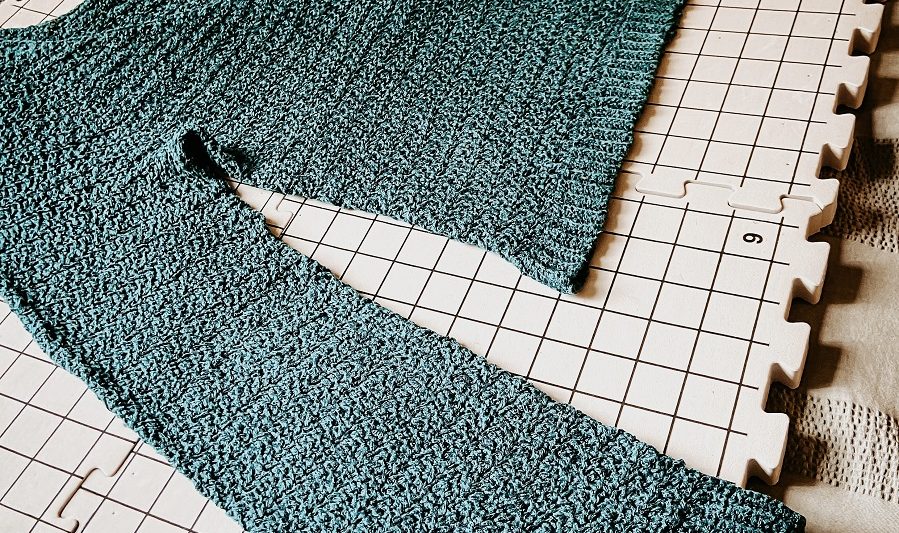
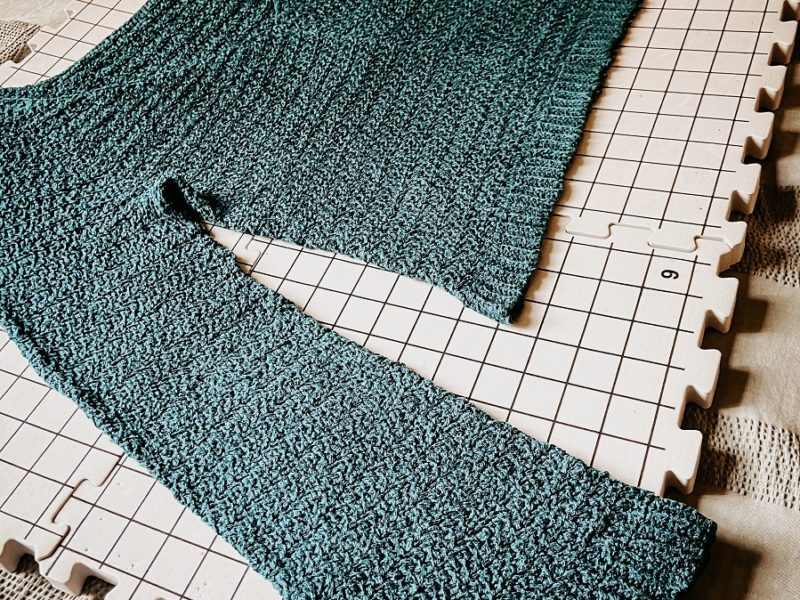


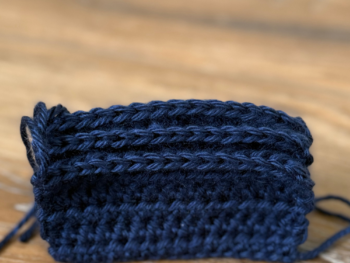
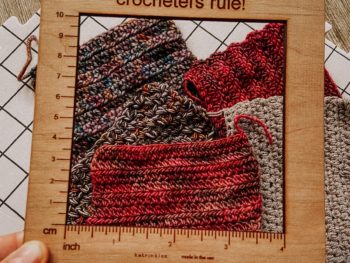
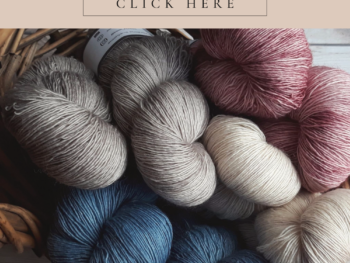
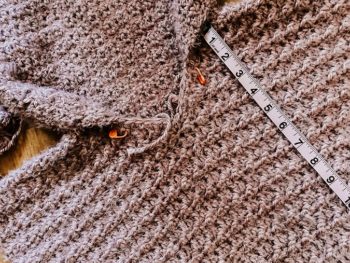
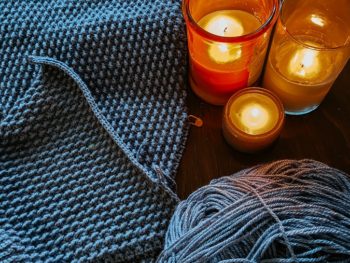
 Free Crochet Sweater Pattern for Beginners: The Autumn Air Pullover
Free Crochet Sweater Pattern for Beginners: The Autumn Air Pullover
[…] Note: I recommend to block all natural fibers because it helps preserve them and maintain their shape. (blocking is how I wash all my handmades.) Here’s a link to an article all about how to block. […]